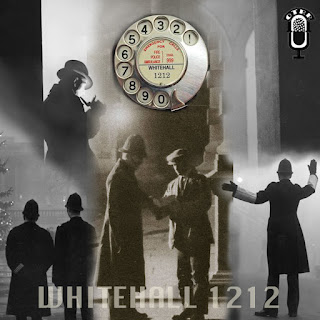(1951-1952)
Written and Directed by Willys Cooper
IMDB Entry
Success in media begets copycats, especially in TV and radio. When Dragnet became a hit, other producers tried to copy the format of choosing actual cases from police files. Of course, Dragnet wouldn’t allow anyone to use the files of the Los Angeles police, so people looked elsewhere. Willys Cooper managed to get the cooperation of Scotland Yard in London, and used it as a basis for Whitehall 1212.
The show clearly was imitating Dragnet*, though with a formula all its own. It would introduce the audience to Scotland Yards’ Black Museum, where mementos of crimes were kept for study.** After talking about the artifact of this week’s case, a police inspector would come in and discuss the case from start to finish, dramatizing what he found and how it all unfolded until the criminal was caught (and usually hanged).
While the show did not have the great characterizations that made Dragnet a hit, the crimes were well chosen and listening to police procedure in the UK shows the difference between the two legal systems. If there was any doubt that these weren’t real cases, one of them was clearly the famous Hawley Crippen case, with all the names changed.***
The show was performed by an all-British cast, and went through different actors in the main show for most episodes.
At about the same time, Orson Welles hosted The Black Museum, another radio show based on its artifacts..Welles’ version wasn’t a police procedural, though, and showed the crime being committed.
The show ran for around a year. Clearly it wasn’t the success Dragnet was, mostly because it lacked the quirky characters that made Webb’s show latter so fascinating (though they tried). Welles’s version didn’t fare much better. But both are fine examples of radio drama.
__________________________________________________________
*Including the line in the introduction: “The names, for obvious reasons, have been changed.”
**There was (and still is) a Black Museum (now called the Crime Museum), though it’s not open to the public.
***Not sure why they had to. The case is famous even today.

No comments:
Post a Comment